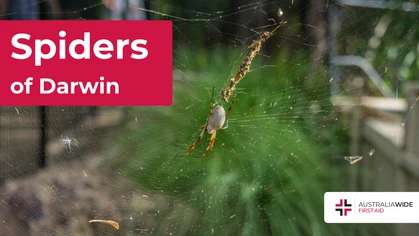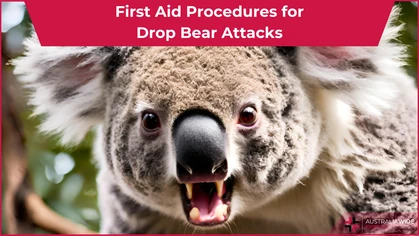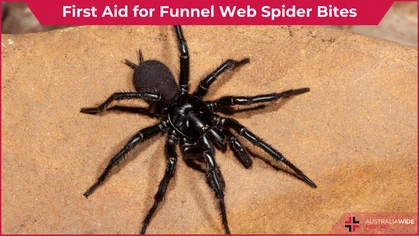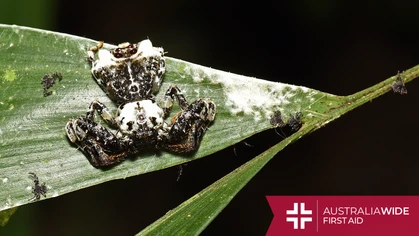The Dugite Snake of Western Australia

Bites and Stings

The Dugite snake is one of the most common snakes in urban and semi-rural areas throughout southern Western Australia, including Perth. Like other types of Brown snakes, they have potent venom and are considered dangerous to humans.
Unlike most snakes, Dugite numbers have increased with urban sprawl. They’re drawn to their favourite prey – the house mouse. Around Perth, the Dugite (Pseudonaja affinis) is actually one of the most common snakes found around buildings. Similar to other types of brown snakes (such as the Western brown snake or the Eastern brown snake), the Dugite is considered very dangerous to humans because of its large size and potent venom. In this article, we’re going to help you become better acquainted with the Dugite snake and how to treat their bites. You can get hands-on experience with snake bite first aid at our general or childcare first aid courses in Western Australia.Appearance
The Dugite snake has the following characteristics:- Long and slender body
- Relatively large and semi-glossy scales
- Small head that is indistinct from their neck
- A strong brow ridge over the eye
Habitat and Distribution
Dugites have a wide variety of habitats, including coastal dunes, forests, and shrublands. You’ll find them sheltering beneath logs and rocks, in abandoned termite mounds and stick ant nests, and in rabbit and rodent burrows. They’ll also live in heavily degraded habitats such as golf courses, industrial parks, and open agricultural country. Around areas of human habitation, Dugites will take refuge under refuse like concrete slabs, tin roofing, and fibro sheets. Dugites are found in southern Western Australia and western coastal South Australia.Feeding and Behaviour
Dugites are typically most active from October through to April. This venomous snake is diurnal and active during the day. On hot days, however, they will be most active in the morning and to a lesser extent in the afternoon. The Dugite eats a variety of prey, including frogs, mammals, and birds. They’re known to be cannibalistic, and can eat snakes that are almost their own size. Their two largest sources of food are lizards and house mice.Danger
Dugites are generally quite shy, so they will slither away if disturbed. However, they can become agitated and will defend themselves if cornered. It will raise its body into a tight upright S-shape and bite very quickly. Dugites have small fangs that may not penetrate thick shoes or heavy clothing. However, because they are venomous and considered quite dangerous, anybody with a suspected bite should seek immediate medical attention.First Aid
If bitten by a snake, always regard it as an emergency. Even if the snake isn’t venomous, or hasn’t released any venom when biting you (dry bite), there are still risks of infection and anaphylaxis. Call 000 immediately. For further advice on what to do, please refer to our article on how to identify and treat snake bites.Final Thoughts
Snakes, including the Dugite, will never go out of their way to attack you. The best way to avoid a snake bite is to never attempt to approach, capture, or kill a snake, whether at home or in the wild. To learn more about snake bite first aid, you can sign up for a general or childcare first aid course in Western Australia.
Originally published at
https://www.australiawidefirstaid.com.au/resources/dugite-snake
as part of the Australia Wide First Aid Articles Library









